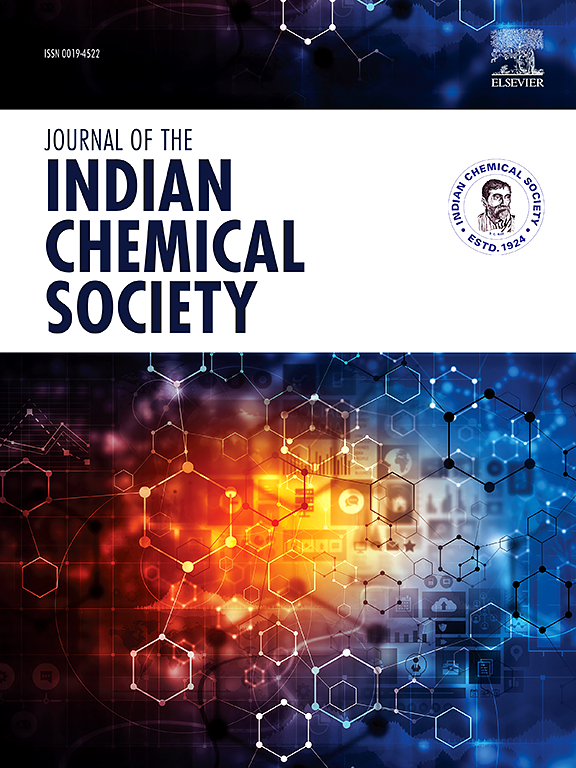PEG-200诱导均匀多孔聚砜超滤膜去除染料
IF 3.2
4区 化学
Q2 CHEMISTRY, MULTIDISCIPLINARY
引用次数: 0
摘要
以二甲基甲酰胺(DMF)为溶剂,水为混凝剂,在室温下采用相转化法制备了不对称、均匀、多孔的聚砜(PSf)平板膜。文献中主要用聚乙二醇PEG-400或更高分子量的PEG制备聚砜超滤膜,而对低分子量PEG-200制备聚砜超滤膜的研究较少。因此,本文系统地研究了铸膜液中PEG分子量(200 - 20,000 Da)、PEG 200浓度(0-5 wt%)和PSf浓度(14-24 wt%)对膜性能的影响。分析了膜的形态、孔隙率、气泡点、纯水通量(PWF)、含水率和接触角。SEM分析证实形成了均匀的纳米孔结构,特别是在3 wt% PEG-200时。随着聚乙二醇-200在PSf膜铸液中浓度的增加,PWF从103 L m−2 h−1增加到123 L m−2 h−1,膜的疏水性增加,接触角从40.58°增加到69.63°。因此,与使用PEG-400或更高分子量的PEG制备的膜相比,使用PEG-200作为孔形成物合成的PSf膜显示出更高的水通量。随着浇注液中PSf含量的增加(从14 wt%增加到24 wt%), (a) peg - 100k的溶质吸收率显著提高,从40.9%提高到81.5%,(b)染料吸收率也有所提高。因此,这些具有纳米孔的膜将有助于去除低分子量化合物。本文章由计算机程序翻译,如有差异,请以英文原文为准。

Uniformly porous polysulfone ultrafiltration membrane induced by PEG-200 as additive for dye removal
Asymmetric, uniform, and porous polysulfone (PSf) flat-sheet membranes were fabricated via the phase inversion method using dimethylformamide (DMF) as solvent and water as coagulant at room temperature. A PSf ultrafiltration membrane was fabricated in literature primarily using polyethene glycol PEG-400 or even higher molecular weight PEG, however, the low molecular weight PEG-200 is less explored. Thus, the effect of the PEG molecular weight (200–20,000 Da), PEG 200 concentration (0–5 wt%), and PSf concentration (14–24 wt%) in the casting solution on membrane properties are systematically investigated in this paper. Membrane morphology, porosity, bubble point, pure water flux (PWF), moisture content, and contact angle were analyzed. SEM analysis confirmed the formation of uniform nanoporous structures, particularly at 3 wt% PEG-200. The increasing PEG-200 concentration in the PSf membrane casting solution leads to enhanced PWF from 103 to 123 L m−2 h−1 and increased membrane hydrophobicity, as indicated by a rise in contact angle from 40.58° to 69.63°. Thus, the PSf membrane synthesized using the PEG-200 as a pore former shows the higher water flux compared to membrane prepared using PEG-400 or higher molecular weight PEG. With increasing PSf content (from 14 to 24 wt%) in the casting solution, (a) the solute rejection for PEG-100 K improved significantly, from 40.9 % to 81.5 % and (b) the dye rejection was also improved. These membranes with nanopores will thus be useful for the removal of low molecular weight compounds.
求助全文
通过发布文献求助,成功后即可免费获取论文全文。
去求助
来源期刊
CiteScore
3.50
自引率
7.70%
发文量
492
审稿时长
3-8 weeks
期刊介绍:
The Journal of the Indian Chemical Society publishes original, fundamental, theorical, experimental research work of highest quality in all areas of chemistry, biochemistry, medicinal chemistry, electrochemistry, agrochemistry, chemical engineering and technology, food chemistry, environmental chemistry, etc.

 求助内容:
求助内容: 应助结果提醒方式:
应助结果提醒方式:


